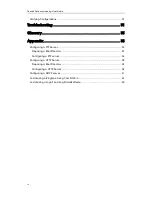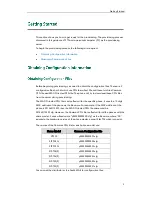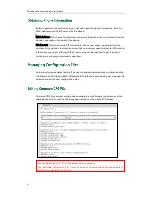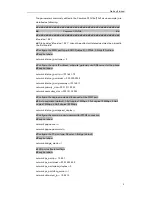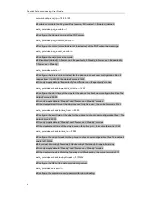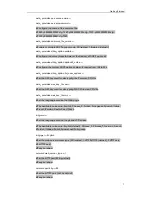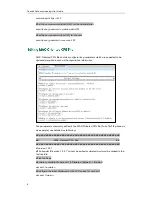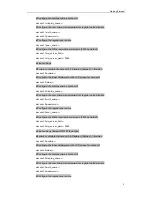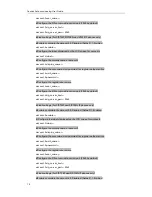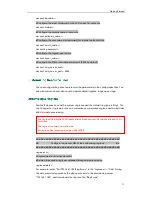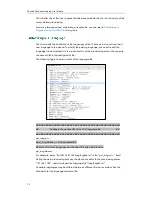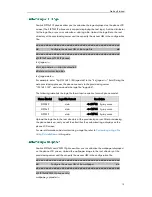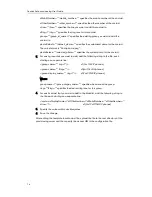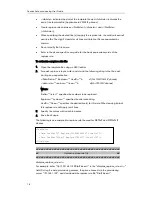
Getting Started
3
This section shows you how to get ready for the provisioning. The provisioning process
discussed in this guide uses TFTP and a personal computer (PC) as the provisioning
server.
To begin the provisioning process, the following are required:
Obtaining Configuration Information
Managing Configuration Files
Before beginning provisioning, you need to obtain the configuration files. There are 2
configuration files both of which are CFG formatted. We call these two files Common
CFG file and MAC-Oriented CFG file. The phone will try to download these CFG files
from the server during provisioning.
The MAC-Oriented CFG file is only effectual for the specific phone. It uses the 12-digit
MAC address of the phone as the file name. For example, if the MAC address of the
phone is 0015651130F9, then the MAC-Oriented CFG file name must be
0015651130F9.cfg. However, the Common CFG file is effectual for all the phones with the
same model. It uses a fixed name “y0000000000XX.cfg” as the file name, where "XX"
equals to the hardware version of the phone model, except 0 for T28 which is special.
The names of the Common CFG file for each phone model are:
You can ask the distributor or the Yealink FAE for configuration files.
Phone Model
Common Configuration File
VP530
y000000000023.cfg
SIP-T38G
y000000000038.cfg
SIP-T32G
y000000000032.cfg
SIP-T28(P)
y000000000000.cfg
SIP-T26(P)
y000000000004.cfg
SIP-T22(P)
y000000000005.cfg
SIP-T20(P)
y000000000007.cfg
Summary of Contents for SIP-T2XP
Page 1: ...Table of Contents i...
Page 2: ......
Page 6: ...Yealink Auto provisioning User Guide vi...
Page 8: ...Yealink Auto provisioning User Guide 2...
Page 34: ...Yealink Auto provisioning User Guide 28...




